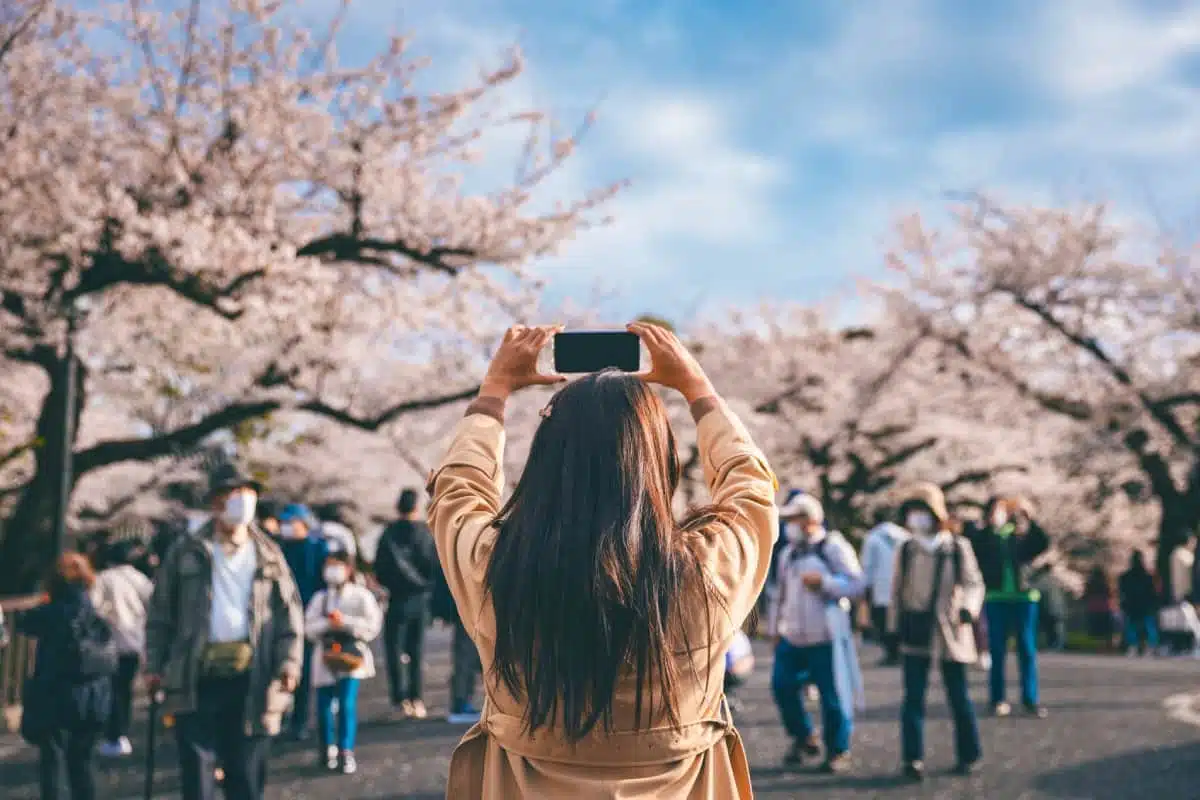Japan’s calendar brims with seasonal festivals, each offering a unique comprehension of the country’s rich cultural heritage. From the icy sculptures of Sapporo’s Snow Festival to the vibrant processions of Kyoto’s Gion Matsuri, these celebrations span the archipelago, marking the changing seasons with a blend of tradition, artistry, and community spirit. This guide explores eleven of Japan’s year-round festivities, providing insights into the cultural significance of these events and practical advice for travelers eager to immerse themselves in the festivities. Whether you’re drawn by the sight of cherry blossoms or the autumnal rites, Japan’s seasonal festivals promise an unforgettable journey through the country’s living traditions.
1. Sapporo Snow Festival

Featured Image Credit: Shutterstock / gorillaimages
The Sapporo Snow Festival, held annually in February in Hokkaido’s capital, transforms the city into a winter wonderland of snow and ice sculptures. Originating in 1950, the festival now attracts millions of visitors, drawn by the spectacular displays that range from intricate statues to massive structures. The festival spreads across several sites, with Odori Park, Susukino, and Tsu Dome hosting the main attractions. The festival offers a variety of winter sports, ice bars, and local cuisine, providing a comprehensive experience of Hokkaido’s winter charm.
Insider’s Tip: To fully enjoy the festival, dress warmly in layers and invest in quality snow boots for comfort and safety as you explore the icy exhibits. Visiting the sculptures at night is highly recommended; the illuminations add a magical dimension to the artworks.
When to Travel: Early to mid-February is the ideal time to visit, coinciding with the festival’s schedule.
How to Get There: Sapporo is accessible by air from Tokyo and other major cities. Once in Sapporo, public transport and unique festival shuttles make navigating between the sites straightforward.
2. Kyoto’s Gion Matsuri
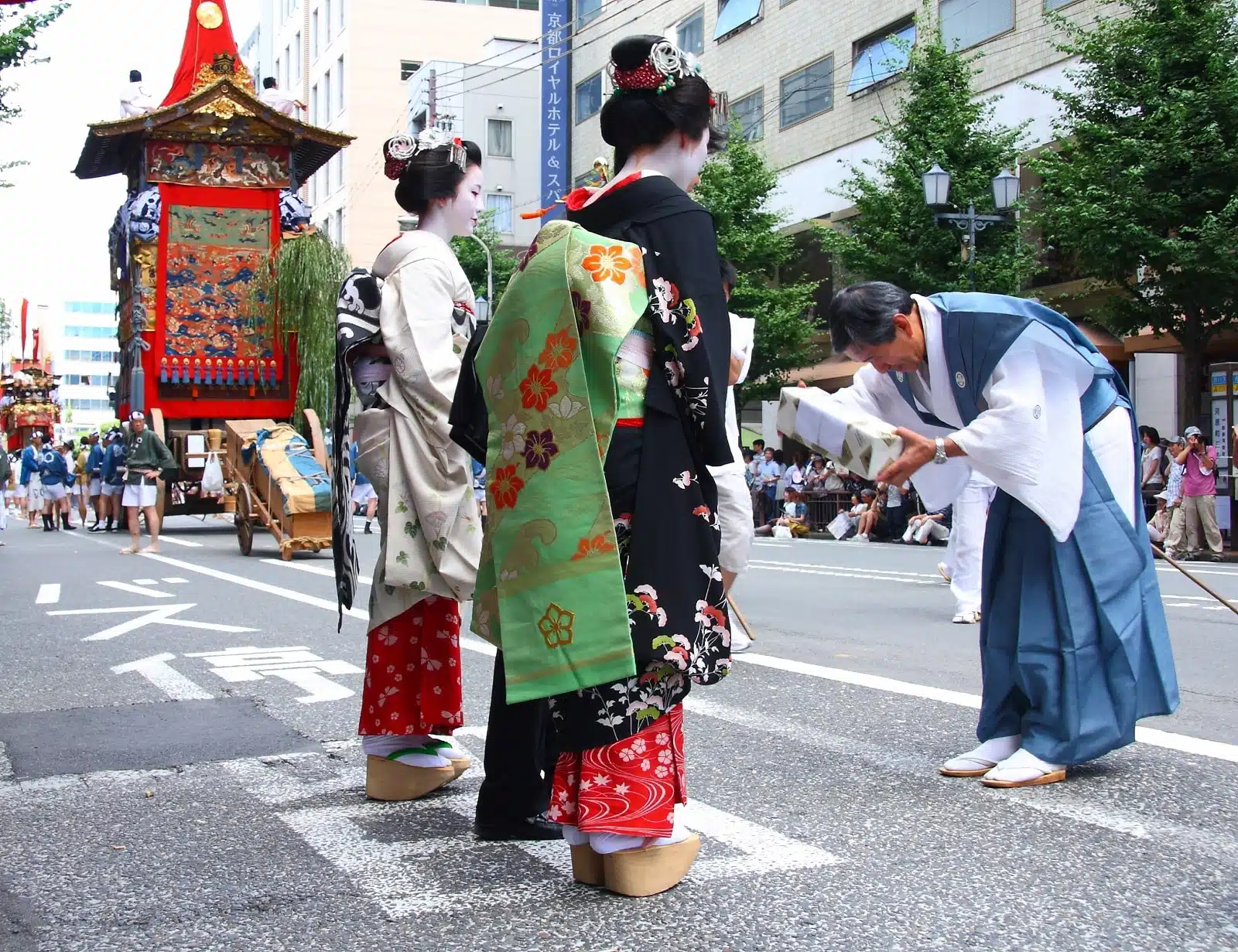
Image Credit: Shutterstock / Sergii Rudiuk
Gion Matsuri, celebrated in Kyoto throughout July, is one of Japan’s most famous festivals, dating back to the 9th century. It’s known for its grand procession of floats, or “Yamaboko Junko,” on July 17 and 24, showcasing Kyoto’s craftsmanship, culture, and community. The festival’s highlight is the parade of elaborate floats, some towering up to 25 meters, accompanied by traditional music and chanting. Gion Matsuri offers an exploration of Kyoto’s history and traditions, with its neighborhood festivities, tea ceremonies, and the chance to see locals in traditional yukata.
Insider’s Tip: To look more closely at the floats and avoid the crowds, visit the float construction sites in the days leading up to the parade. Many neighborhoods offer the chance to see the floats being built and adorned.
When to Travel: July is the month to experience Gion Matsuri, with festivities peaking during the parade dates.
How to Get There: Kyoto is well-connected by train, including the Shinkansen from Tokyo. Within Kyoto, efficient bus and subway systems make it easy to reach the festival areas.
3. Cherry Blossom Festivals (Sakura)

Image Credit: Shutterstock / anek.soowannaphoom
The cherry blossom season, a highly anticipated time of year throughout Japan, symbolizes the beauty and transience of life. In cities like Tokyo and Kyoto, the cherry blossom festivals, such as Ueno Sakura Matsuri and Maruyama Park Sakura Matsuri, attract locals and tourists. These festivals, held in March and April, celebrate spring, featuring picnics under the blossoming trees, cultural performances, and spectacular night illuminations. The practice of hanami, or flower viewing, is an age-old tradition that brings people together to appreciate the fleeting beauty of the sakura. The cherry blossoms’ brief bloom encourages reflection and appreciation of the moment, embodying much of Japanese aesthetics and philosophy.
Insider’s Tip: For a less crowded experience, consider visiting smaller towns like Hirosaki in Aomori Prefecture, which hosts one of the most spectacular cherry blossom festivals in late April.
When to Travel: Late March to early April for most of Japan, though Hokkaido blooms in late April to early May.
How to Get There: Ueno Park is easily accessible via Ueno Station in Tokyo. For Hirosaki, take a Shinkansen to Shin-Aomori and a local train to Hirosaki.
4. Aomori Nebuta Festival
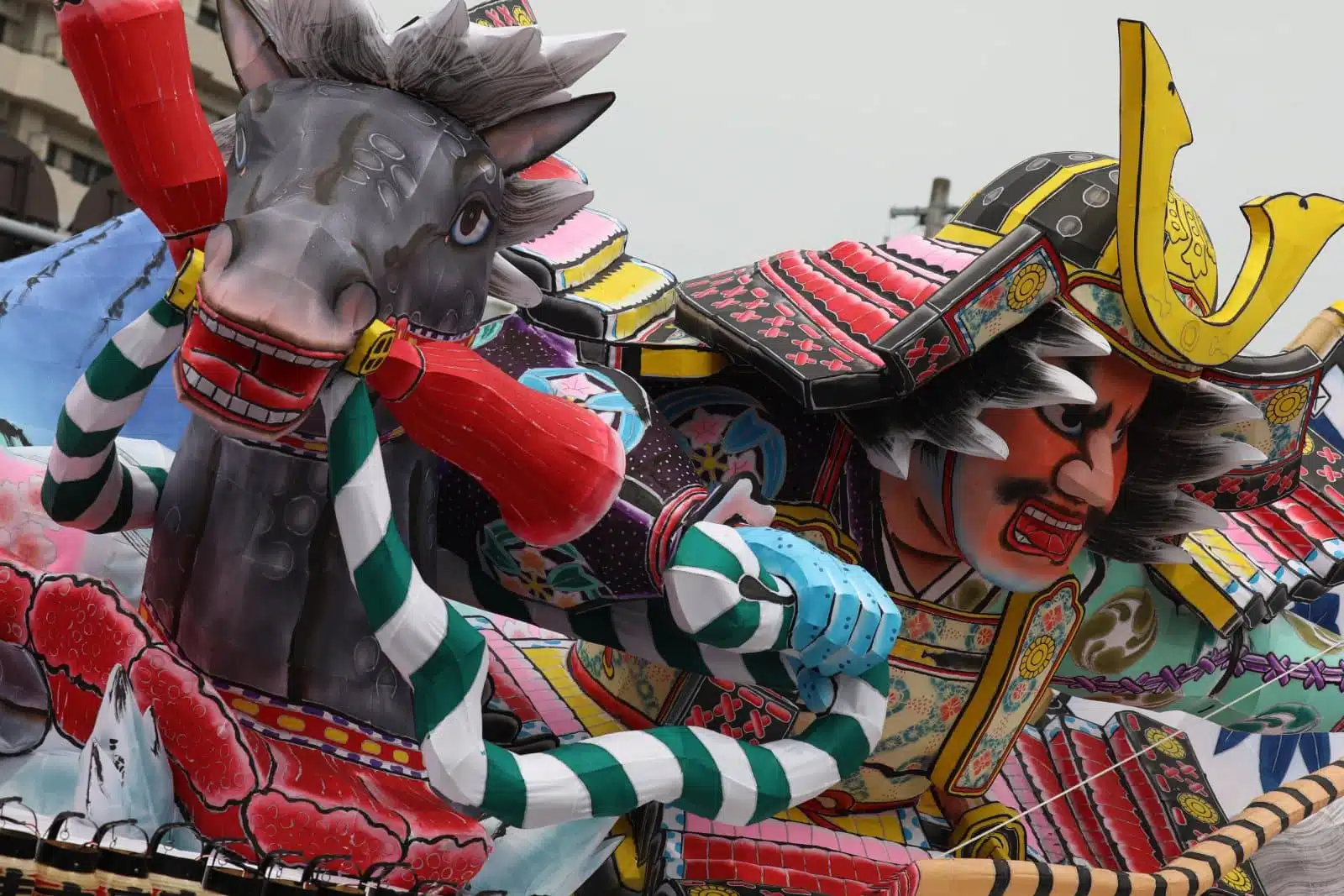
Image Credit: Shutterstock / Eramiya
The Aomori Nebuta Festival, a vibrant celebration held in early August, is one of Japan’s most colorful and dynamic festivals. Giant illuminated floats depicting gods, warriors, and mythical creatures parade through the streets of Aomori, creating a lively atmosphere that captivates both locals and visitors. The energy of the Haneto dancers, chanting and dancing around the floats, is contagious, inviting everyone to join in the festivities. This festival is a spectacular display of Japanese craftsmanship, with each float being a work of art meticulously crafted by local artisans.
Insider’s Tip: Participate as a dancer (haneto) by renting the traditional outfit available at local shops. It’s an open invitation to anyone willing to join the festivities.
When to Travel: First week of August.
How to Get There: Aomori is accessible by Shinkansen from Tokyo. The festival venues are close to Aomori Station.
5. Tanabata Matsuri
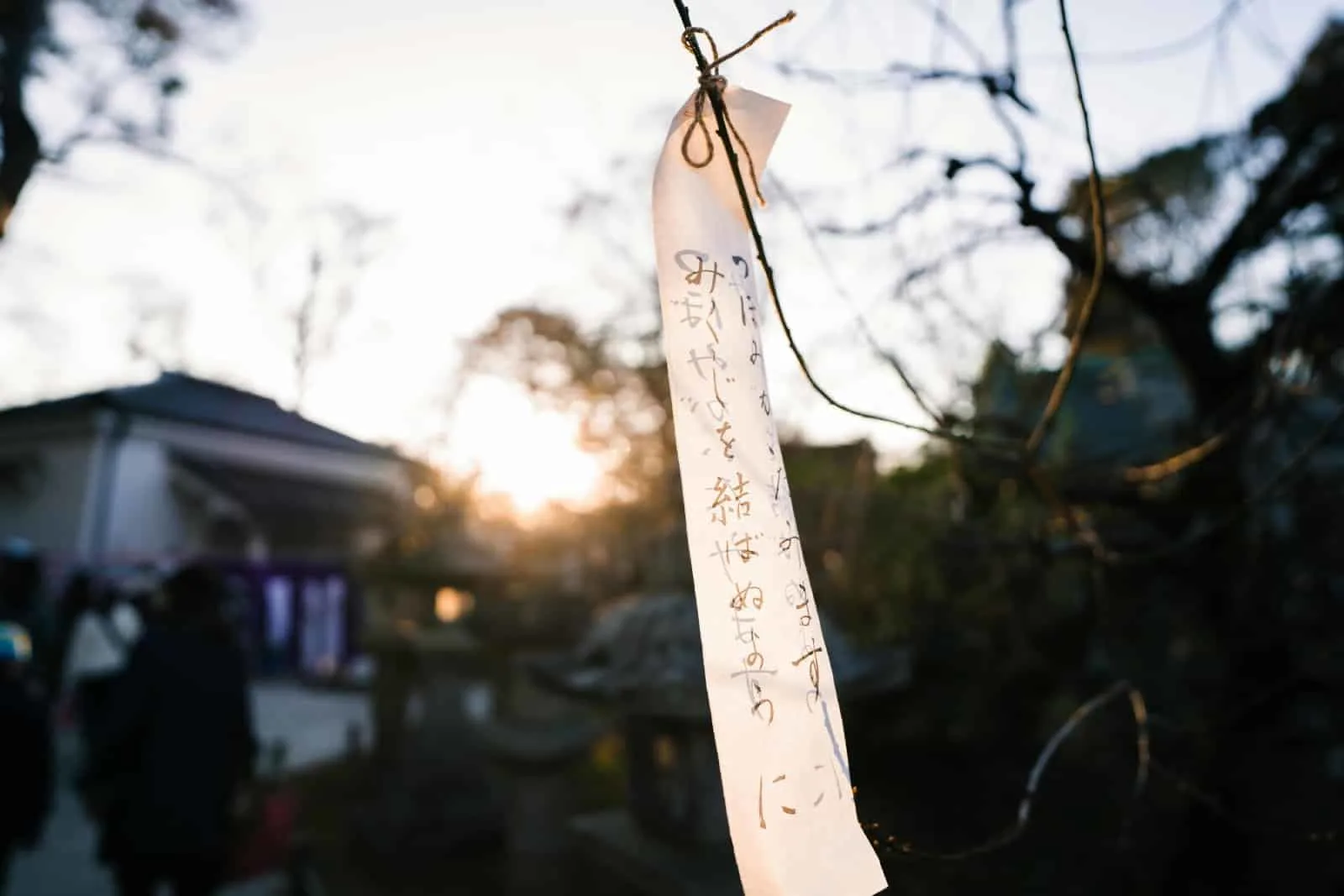
Image Credit: Pexels / Satoshi Hirayama
Tanabata Matsuri, celebrated on July 7th, is inspired by a poignant story of star-crossed lovers who can meet just once a year. This festival is marked by the hanging of tanzaku, small pieces of paper with wishes written on them, on bamboo branches. Cities across Japan, notably Sendai and Hiratsuka, are adorned with colorful decorations, making the streets come alive with a festive mood. The sight of wishes fluttering in the breeze adds a poetic touch to Japan’s already picturesque summer scenes.
Insider’s Tip: Write your own wish on a tanzaku (paper strip) and hang it on a bamboo branch. It’s a unique way to participate in the tradition.
When to Travel: July 7th, though some places like Sendai celebrate in August.
How to Get There: Sendai is about 90 minutes from Tokyo by Shinkansen. Hiratsuka is accessible via local trains from Tokyo.
6. Kanda Matsuri
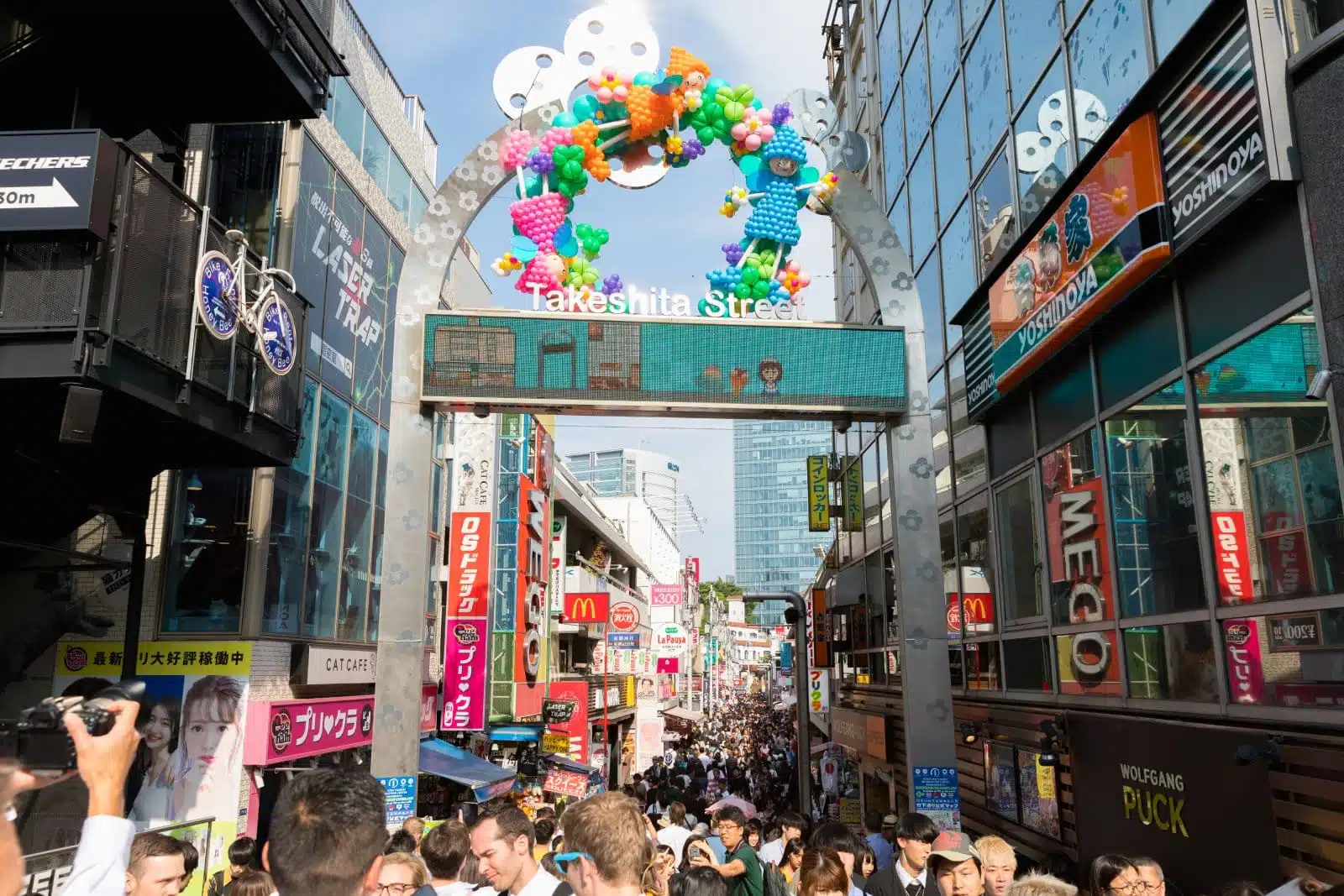
Image Credit: Shutterstock / 2p2play
Kanda Matsuri, celebrated in mid-May at Kanda Myojin Shrine, is one of Tokyo’s three major Shinto festivals, alongside Sanja Matsuri and Sanno Matsuri. This festival, which dates back to the Edo period, honors the deities enshrined at Kanda Myojin, including Daikokuten, one of the Seven Gods of Fortune, and is a celebration of prosperity, good fortune, and community wellbeing. The festivities are characterized by a procession of mikoshi (portable shrines) through the streets of central Tokyo, a spectacle that blends the sacred with the bustling urban environment. Dressed in traditional happi coats, participants chant and carry the mikoshi, making for a lively and spirited parade. The festival also includes musical performances, traditional dances, and food stalls, offering a glimpse into Tokyo’s rich cultural heritage.
Insider’s Tip: Don’t miss the procession of mikoshi (portable shrines) through central Tokyo, a rare sight that bridges the traditional with the modern cityscape.
When to Travel: Mid-May, in odd-numbered years.
How to Get There: The festival is centered around Kanda Myojin Shrine, easily reached by subway to Ochanomizu Station.
7. Yuki Matsuri
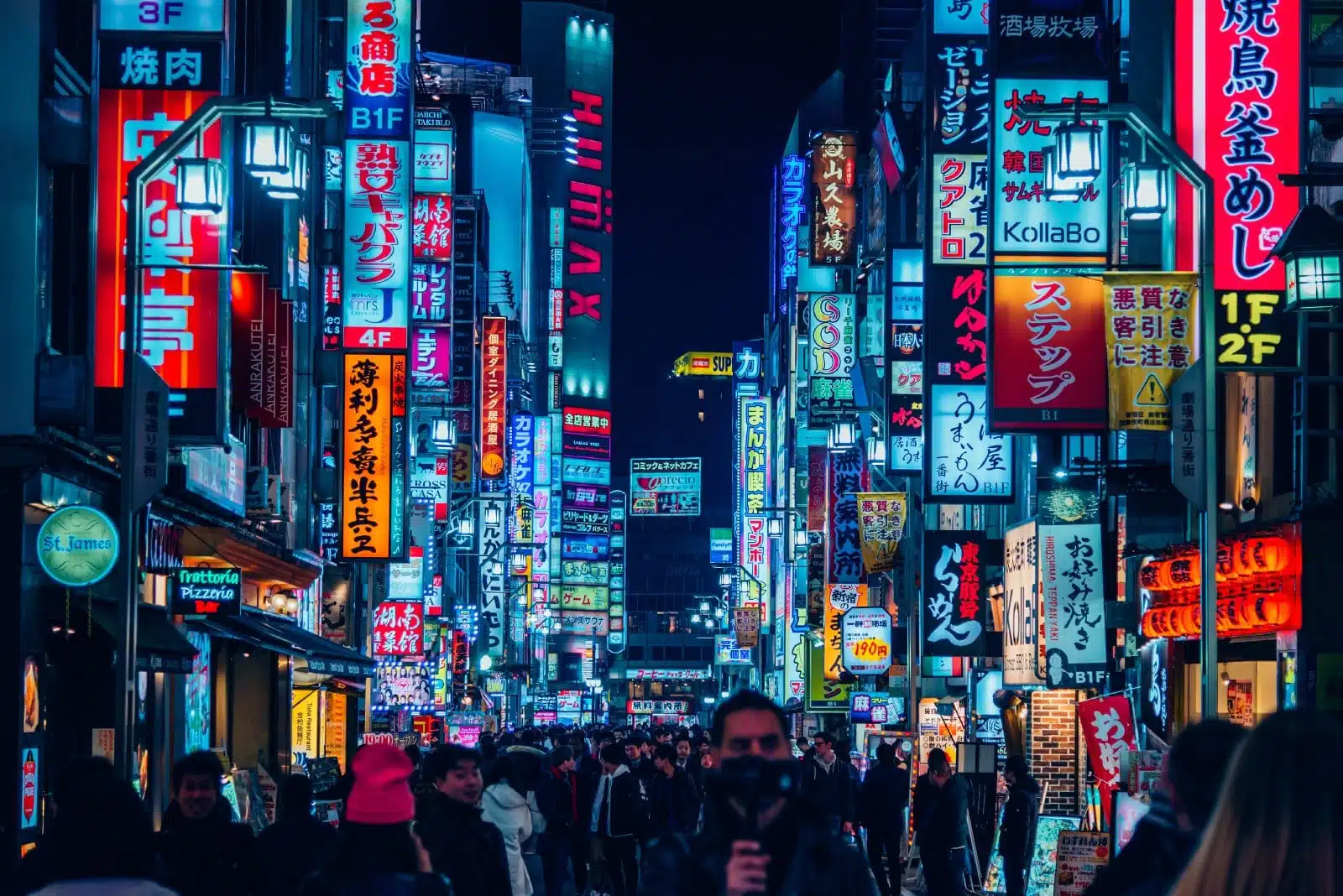
Image Credit: Shutterstock / on_france
The Sapporo Snow Festival, held annually in February in Hokkaido’s capital, Sapporo, is one of Japan’s most famous winter events, attracting visitors from around the world. The festival is renowned for its massive snow and ice sculptures that adorn the city, transforming it into a winter wonderland. Artists and teams work tirelessly to create these sculptures, some illuminated at night, providing a spectacular view against the snowy backdrop. The main sites of the festival are Odori Park, where the largest sculptures are displayed; Susukino, known for its ice sculptures, and Tsudome, offering family-friendly snow activities. The festival features concerts, snow and ice sports events, and local Hokkaido food stalls, celebrating winter and local culture.
Insider’s Tip: Visit at night when the sculptures are beautifully illuminated.
When to Travel: Early February.
How to Get There: Sapporo is accessible by air from Tokyo or by train. The festival sites are spread across the city, easily reached by public transport.
8. Hakata Gion Yamakasa
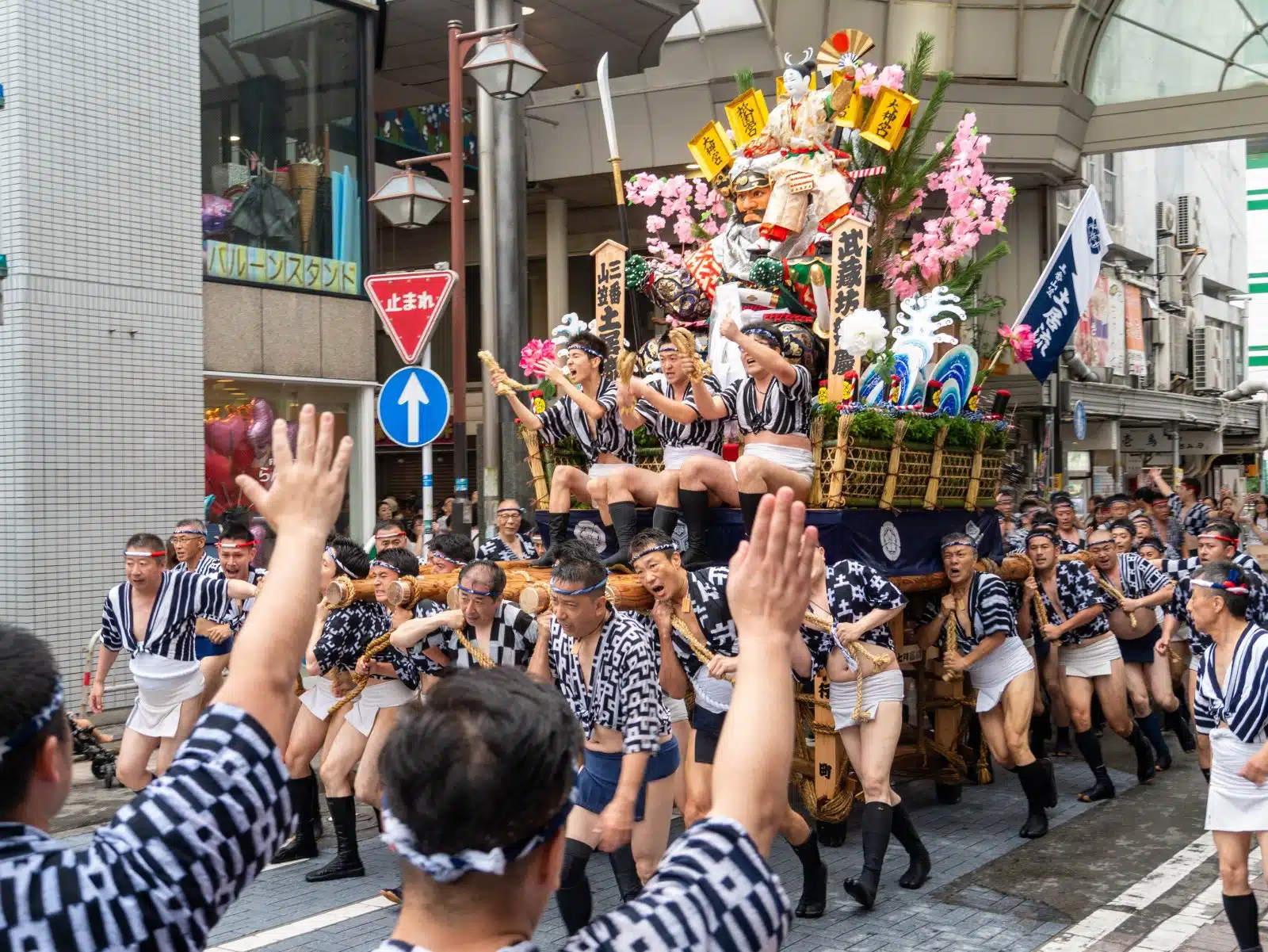
Image Credit: Shutterstock / traction
The Hakata Gion Yamakasa is a dynamic and energetic festival in Fukuoka, Kyushu, every July. This centuries-old event is famous for its race of elaborately decorated floats known as “yamakasa,” which teams of men carry through the streets to display strength, endurance, and community spirit. The festival culminates in the Oiyama, a timed race held in the early morning of July 15, where teams compete to complete a 5km course as quickly as possible. The floats, some towering structures beautifully adorned with traditional Japanese motifs and historical figures, are crafted with meticulous detail showcase the local craftsmanship. The Hakata Gion Yamakasa serves as a thrilling spectacle for spectators and a ritual purifying the city and its inhabitants.
Insider’s Tip: Secure a viewing spot early on the race day to witness this fast-paced event up close.
When to Travel: First half of July.
How to Get There: Fukuoka is accessible by air or Shinkansen. The festival takes place in the Hakata district, near Hakata Station.
9. Takayama Matsuri
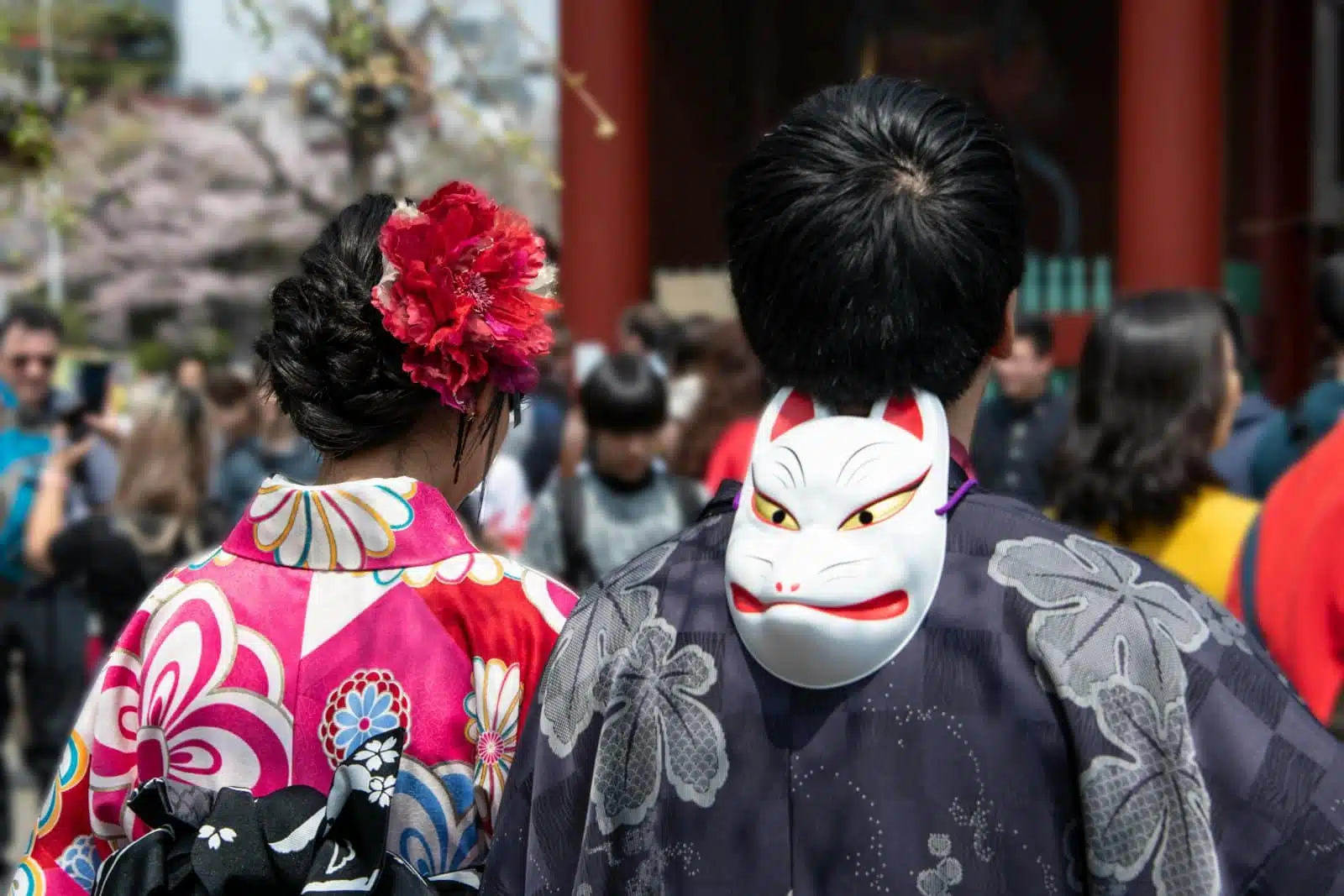
Image Credit: Pexels / David Dibert
Held in the picturesque mountain town of Takayama in Gifu Prefecture, the Takayama Matsuri is celebrated twice a year, in spring and autumn, making it one of Japan’s most beautiful and elaborate festivals. The Spring Festival (Sanno Matsuri) in April coincides with the cherry blossom season, while the Autumn Festival (Hachiman Matsuri) in October offers stunning views of the fall foliage. Both festivals are centered around the Sakurayama Hachimangu Shrine and feature a procession of lavishly decorated floats (yatai), some centuries old and designated as Important Cultural Properties. The Takayama Matsuri is renowned for its intricate karakuri (mechanical doll) performances, traditional music, and the solemn beauty of the floats parading through the historic old town, providing a glimpse into Japan’s rich cultural heritage.
Insider’s Tip: The night festival, with floats lit by lanterns, offers a mesmerizing experience.
When to Travel: Spring and Autumn.
How to Get There: Takayama is accessible by train from Nagoya. The festival takes place in the old town, within walking distance from Takayama Station.
10. Jidai Matsuri
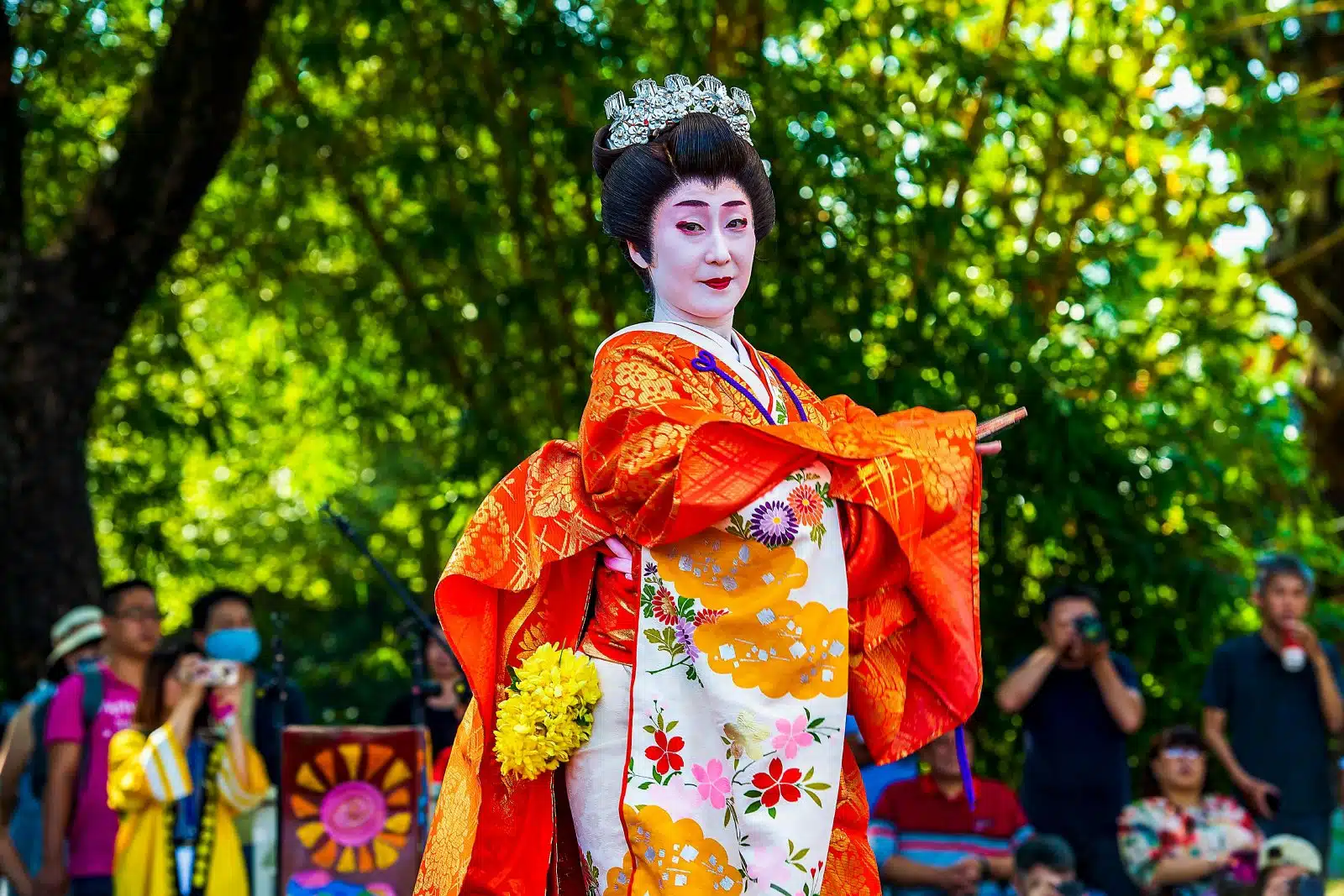
Image Credit: Pexels / Klub Boks
Kyoto’s Jidai Matsuri, or the “Festival of the Ages,” is an elegant procession every October 22, commemorating the foundation of Kyoto as the nation’s capital. This festival is a moving museum of Japanese history, with over 2,000 participants dressed in authentic costumes representing various eras from the Meiji Restoration back to the Heian Period. The procession begins at the Imperial Palace and makes its way to the Heian Shrine, with participants carrying ancient imperial regalia and riding in ox-drawn carts, evoking the grandeur of past centuries. The Jidai Matsuri offers a unique opportunity to witness the continuity of Japanese culture and the reverence for its history, set against the backdrop of Kyoto’s stunning autumnal beauty.
Insider’s Tip: Position yourself along the Imperial Palace’s outer gardens for the best views of the procession.
When to Travel: October 22nd.
How to Get There: Kyoto is well-connected by train. The parade starts at the Imperial Palace and ends at Heian Shrine, both accessible by city buses.
11. Kumamoto Lantern Festival
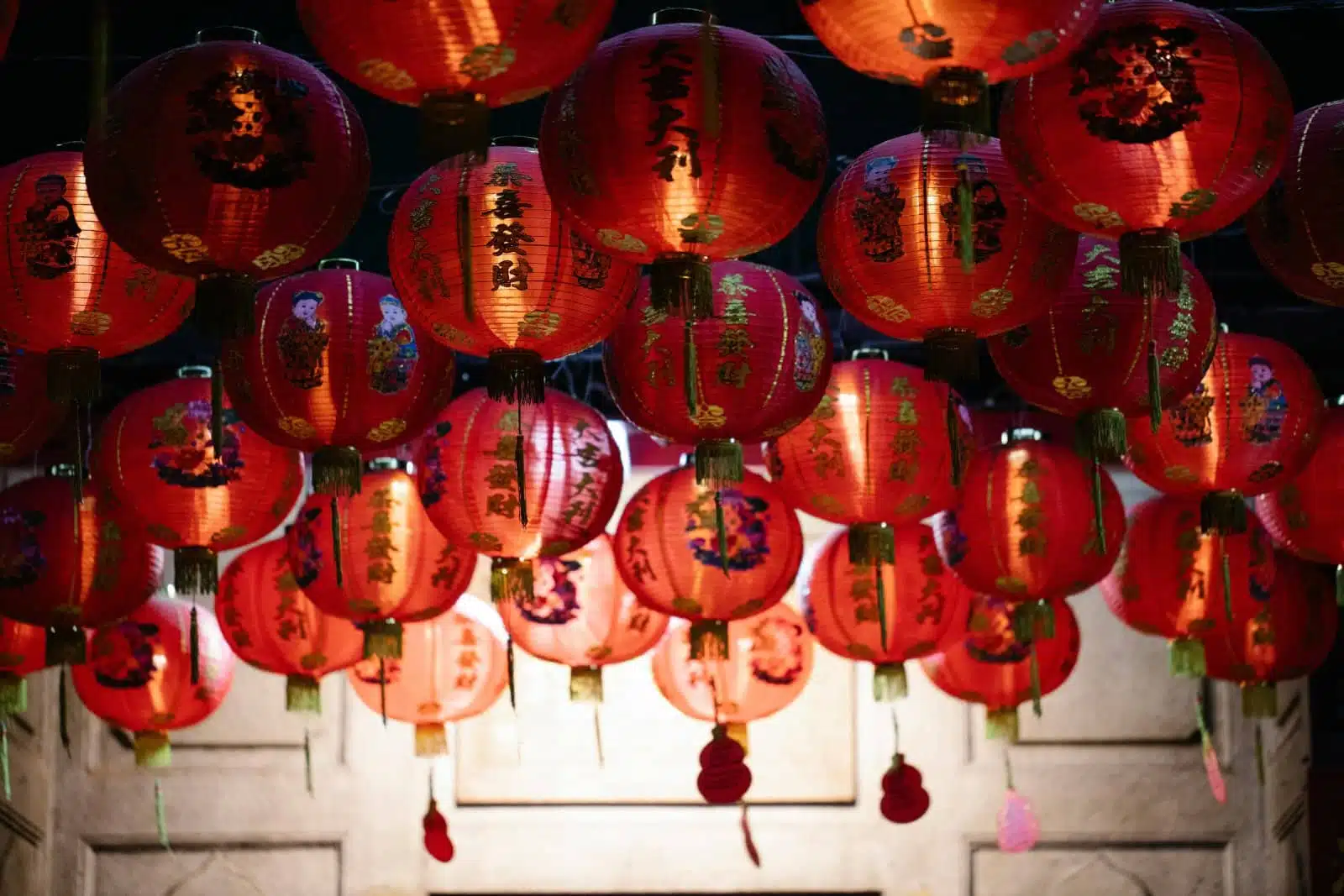
Image Credit: Pexels / Angela Roma
The Kumamoto Lantern Festival illuminates the city of Kumamoto in Kyushu with thousands of paper lanterns, creating an atmosphere that warms the winter chill. Held in early February, this festival celebrates the Lunar New Year and features an array of lanterns that line the streets around Kumamoto Castle, one of Japan’s most iconic fortresses. Artisans and residents craft the lanterns, which range from traditional designs to contemporary art, lighting up the historic city with a soft, inviting glow. The festival also includes cultural performances, food stalls offering local delicacies, and interactive activities such as lantern-making workshops. The Kumamoto Lantern Festival is a beautiful expression of community and tradition, inviting visitors to experience the charm of Kumamoto in a unique and enchanting light.
Insider’s Tip: Participate in lantern-making workshops offered during the festival for a hands-on cultural experience.
When to Travel: Early February.
How to Get There: Kumamoto is accessible by Shinkansen from Fukuoka. The festival is centered around Kumamoto Castle and the downtown area.
The Bottom Line
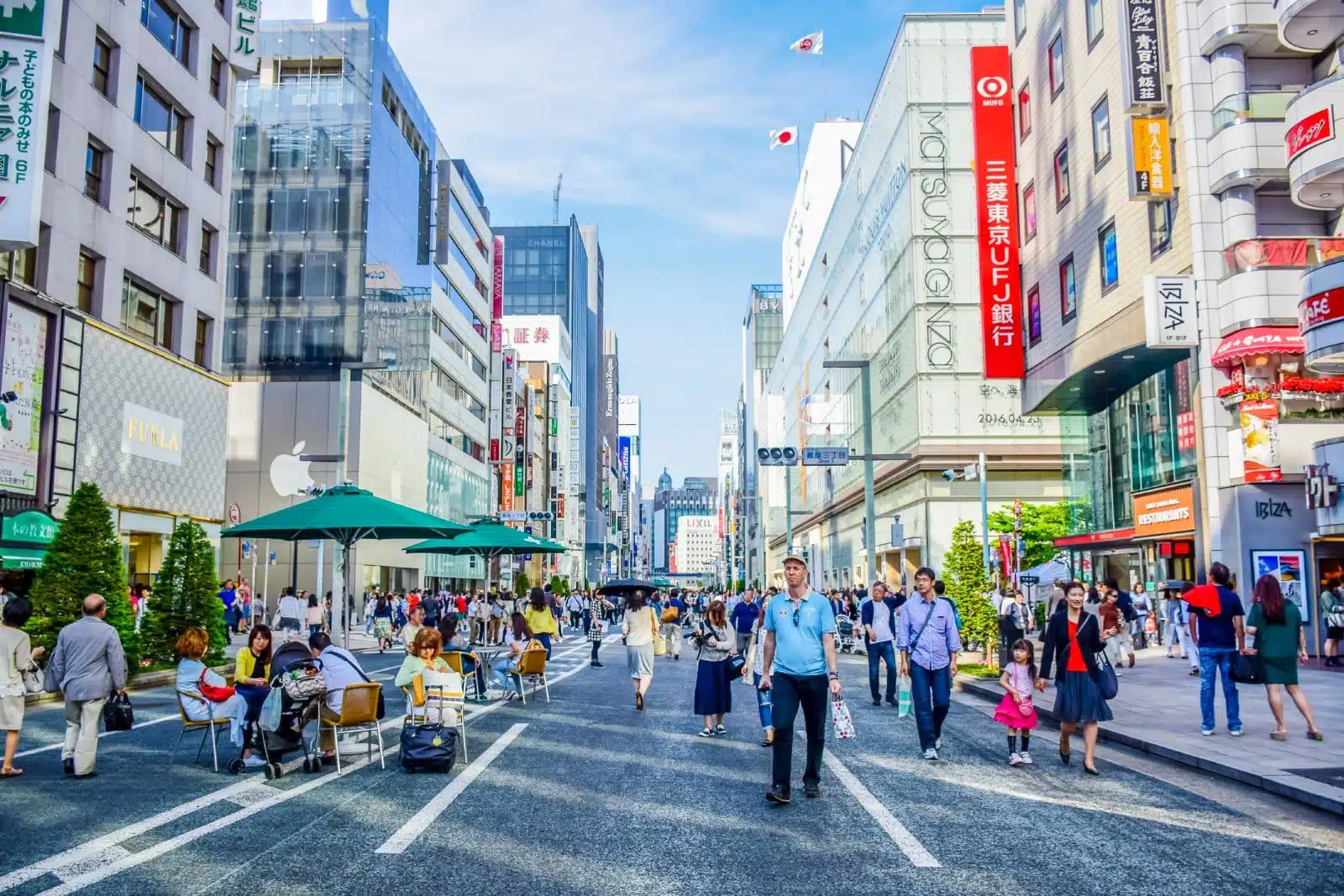
Image Credit: Shutterstock / ParrySuwanitch
Japan’s seasonal festivals showcase the country’s profound cultural richness and community spirit. Each festival, with its unique traditions, offers a window into Japan’s soul, inviting travelers to experience the depth of its heritage firsthand. As you journey through Japan, guided by these celebrations, and become a part of a living tradition that continues to flourish with each passing season. Engage with the local customs, participate where possible, and respect the cultural practices to fully embrace the beauty of Japan’s seasonal festivals.
More From The Green Voyage
Top 10 Trending Travel Destinations 2024
6 Essential Banking Apps for International Travel – Managing Your Finances on the Go
Traveling With Kids – 10 Tips to Create Memorable Family Holidays
The post 11 Seasonal Festivals of Japan – A Guide to Year-Round Celebrations first appeared on The Green Voyage.
Featured Image Credit: Shutterstock / Peera_stockfoto.
For transparency, this content was partly developed with AI assistance and carefully curated by an experienced editor to be informative and ensure accuracy.
Tips for Trip Success
Book Your Flight
Find an inexpensive flight by using Kayak, a favorite of ours because it regularly returns less expensive flight options from a variety of airlines.
Book Your Hotel or Special Accommodation
We are big fans of Booking.com. We like their review system and photos. If we want to see more reviews and additional booking options, we go to Expedia.
You Need Travel Insurance!
Good travel insurance means having total peace of mind. Travel insurance protects you when your medical insurance often will not and better than what you get from your credit card. It will provide comprehensive coverage should you need medical treatment or return to the United States, compensation for trip interruption, baggage loss, and other situations.Find the Perfect Insurance Plan for Your Trip
